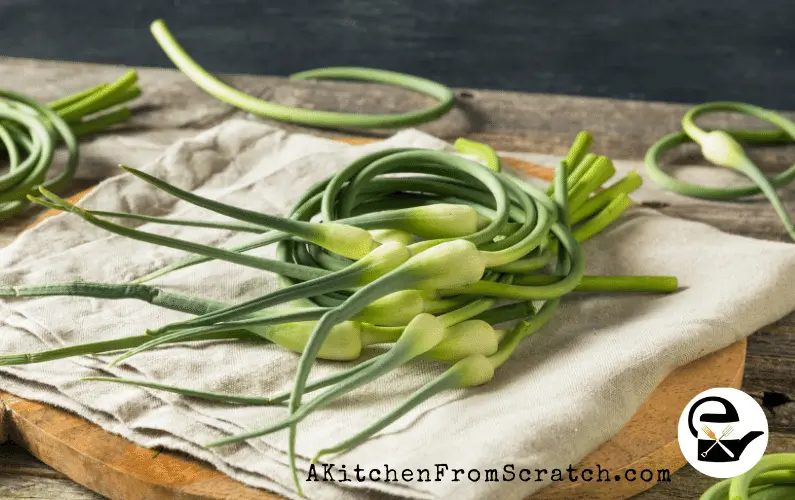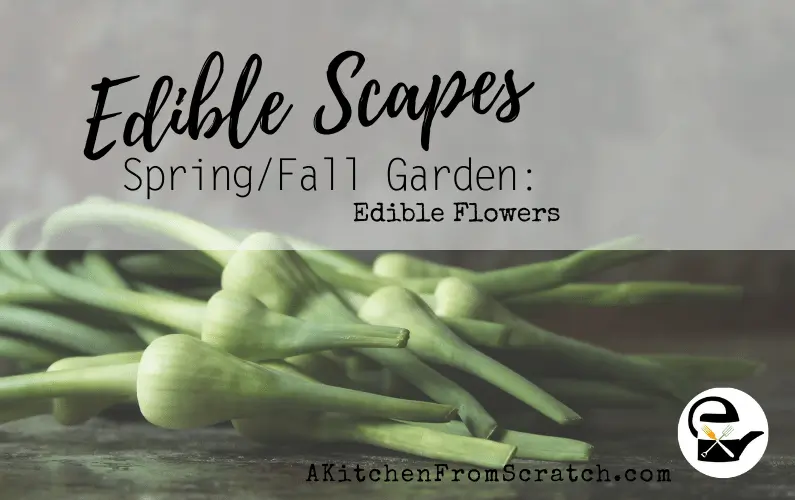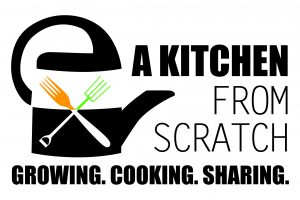This post may contain affiliate links, which means that I may receive a commission if you make a purchase using these links. As an Affiliate Associate I earn from qualifying purchases.
Gardening is one of the most rewarding activities, as it allows us to create our food and enjoy fresh, organic produce. By using garden scape in your kitchen, you can get two harvests off the same plant extending the garden’s life and enjoying a variety of delicious dishes.
What is a scape?
The scape is the flowering stalk at the tip of the plant. If left to bloom, the plant’s growing energy goes into the flower, not the bulb.
A scape is the edible part of a plant, such as scallions, chives, garlic chives, garlic, or leek. They are used in the kitchen as an aromatic and flavorful addition to many dishes.
They can be used raw, sautéed, or roasted in soups, stews, and sauces. They can also be pickled or used to infuse oils and vinegar.
When Do I harvest scapes?
Harvest both stalk and scape and add them to your meal plan. Onion scapes are harvested in late Spring. Scapes of garlic and chives are harvested in both Spring and mid-June. Harvest when your onions start sending up a stalk from the center of the plant.
Not all of your onion scapes will come at once. Revisit your patch weekly until all the scapes have been removed.
Onion scapes have a mild flavor, making green onion or shallots an excellent substitute in any dish.
My husband says it tastes like someone shouted “onion!” from the other room, and your tongue heard it.
Onion scapes are unique and only come in late spring due to rapid temperature fluctuations from warm to cold.
Garden Note: Onions are a humble biannual plant that produces bulbs the first year. They will flower and bear seeds if you allow them to overwinter the second year. t this point, you have two choices: save the seeds for your next crop (if they are an heirloom) or have a large onion patch when the seeds are distributed by mother nature.

What Do I do with Scapes?
Scapes can be diced and used in omelets, fritters, soups, dips, salads, or my favorite pesto or hummus.
Scapes are excellent cooked or grilled as a side dish. Scapes have a more robust flavor when eaten raw or used in pesto.
PRO TIP: Use your beautiful scapes as a centerpiece in a decorative vase.
Once you clip scapes, do not wait too long to harvest the bulb. Unlike garlic, the bulb will not last long after harvesting. The open flowering stem allows water and pests into the center of the bulb and encourages rot. Besides, you don’t want to waste the small window before the scapes bloom.
Onion Scape Pesto:
- 1/2 cup pine nuts (substitutes: sunflower seeds, cashews, or walnuts)
- Two packed cups of greens (Sorrel, spinach, carrot tops, etc.)
- Three cloves garlic
- 2/3 cup chopped scapes
- Grated zest and juice of one lemon (or 1 tsp orange peel powder)
- 4 tablespoons olive oil
- 1 tbsp raw honey or pure maple syrup
- 1/4 teaspoon sea salt.
In a food processor, pulse nuts until they are gritty and resemble sand. Net, add the rest of the ingredients. If it’s too thick, add water or more oil to thin it.
 Store pesto in a tightly sealed glass container in the fridge for up to a week.
Store pesto in a tightly sealed glass container in the fridge for up to a week.
Another option is to freeze in ice cube trays or silicone molds. Once frozen, transfer cubes to a plastic bag (remove as much air as possible to avoid freezer burn) for up to a month.
This is an easy recipe and is always a big hit when we entertain.
After making onion scape pesto, share and tag me in your post!
PRO TIP: My ultimate favorite for small batches of pesto is a hand blender. instead of a food processor.
Enjoy your Pesto recipe card and reap the benefits of eating seasonally.




